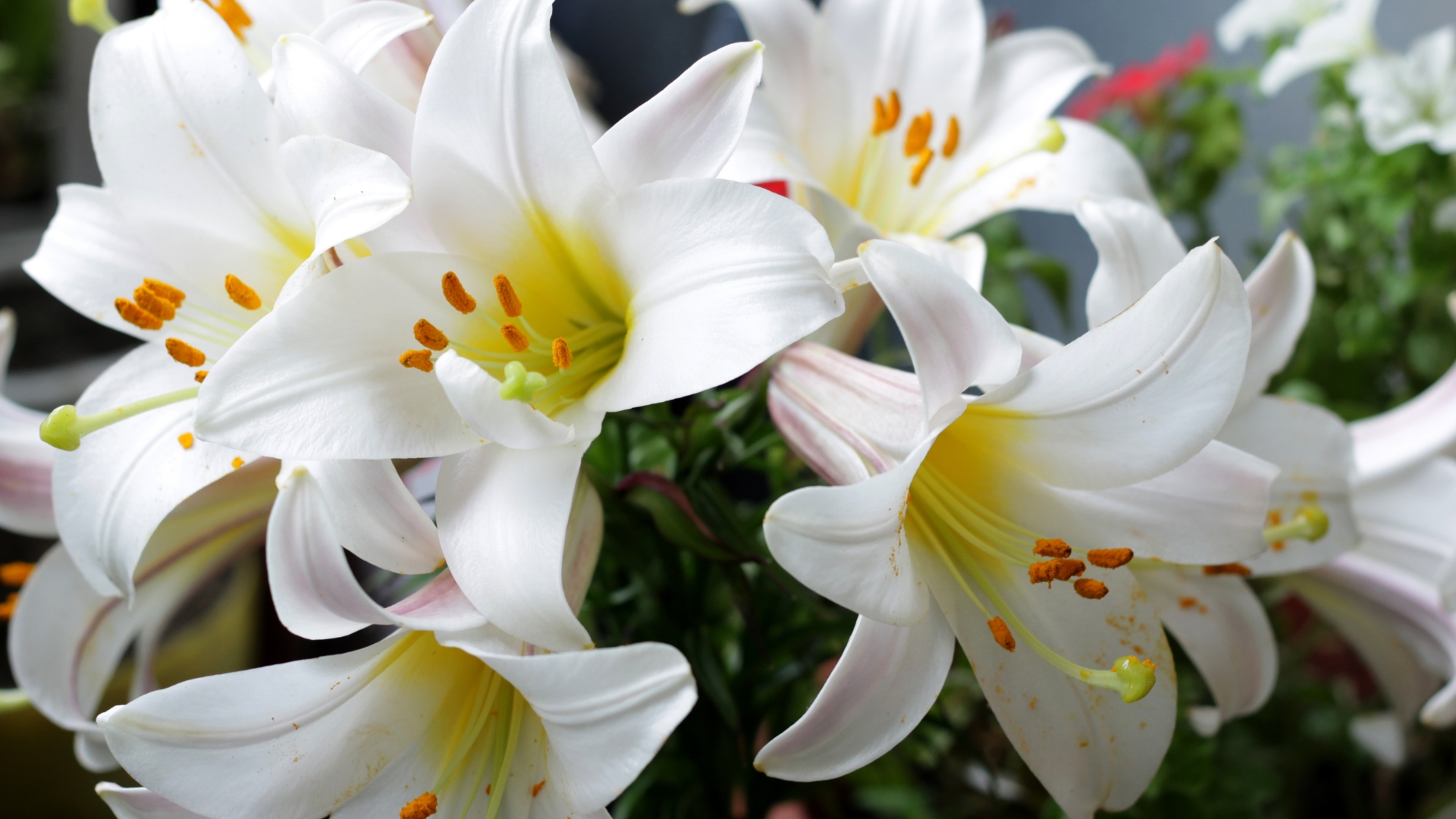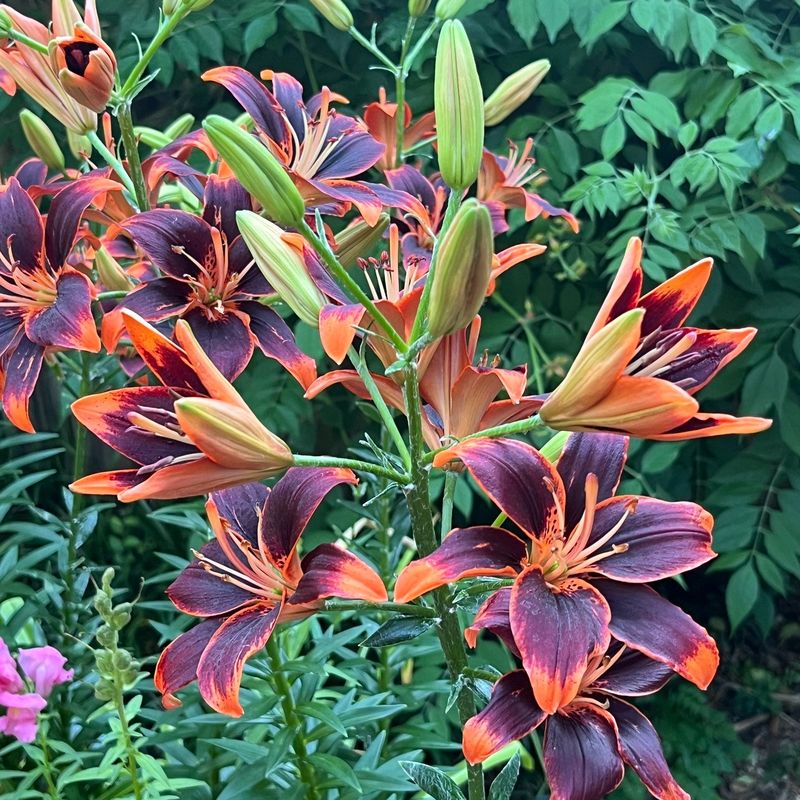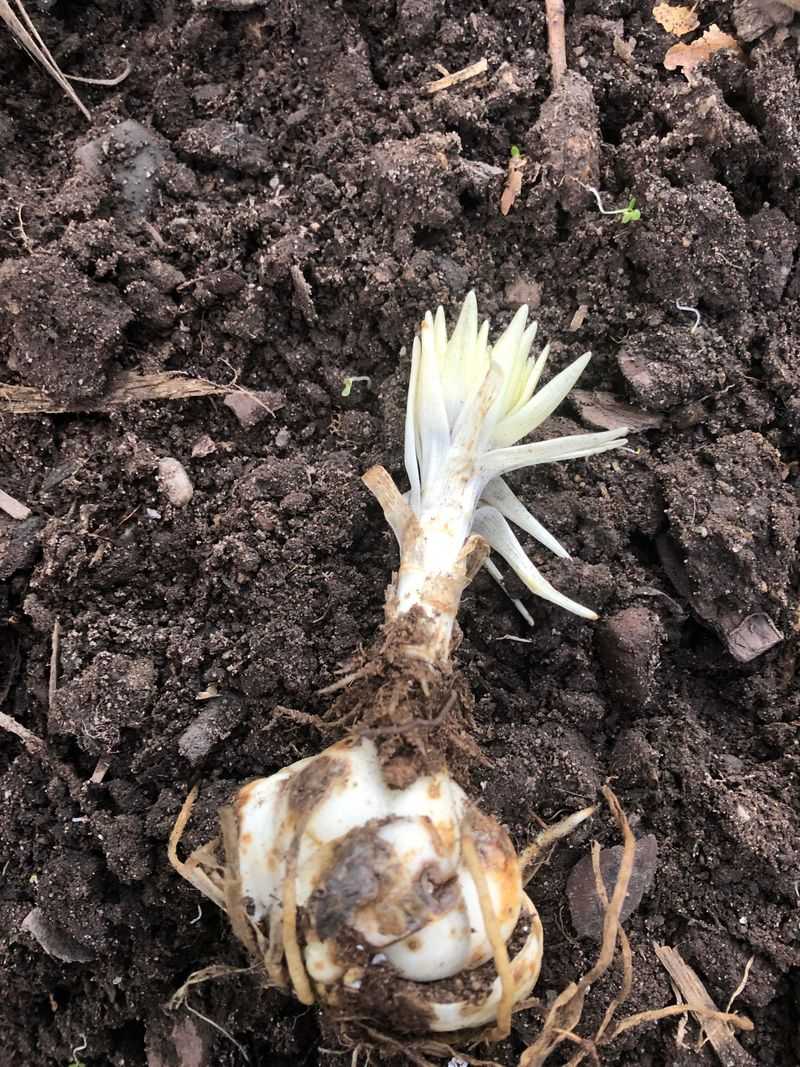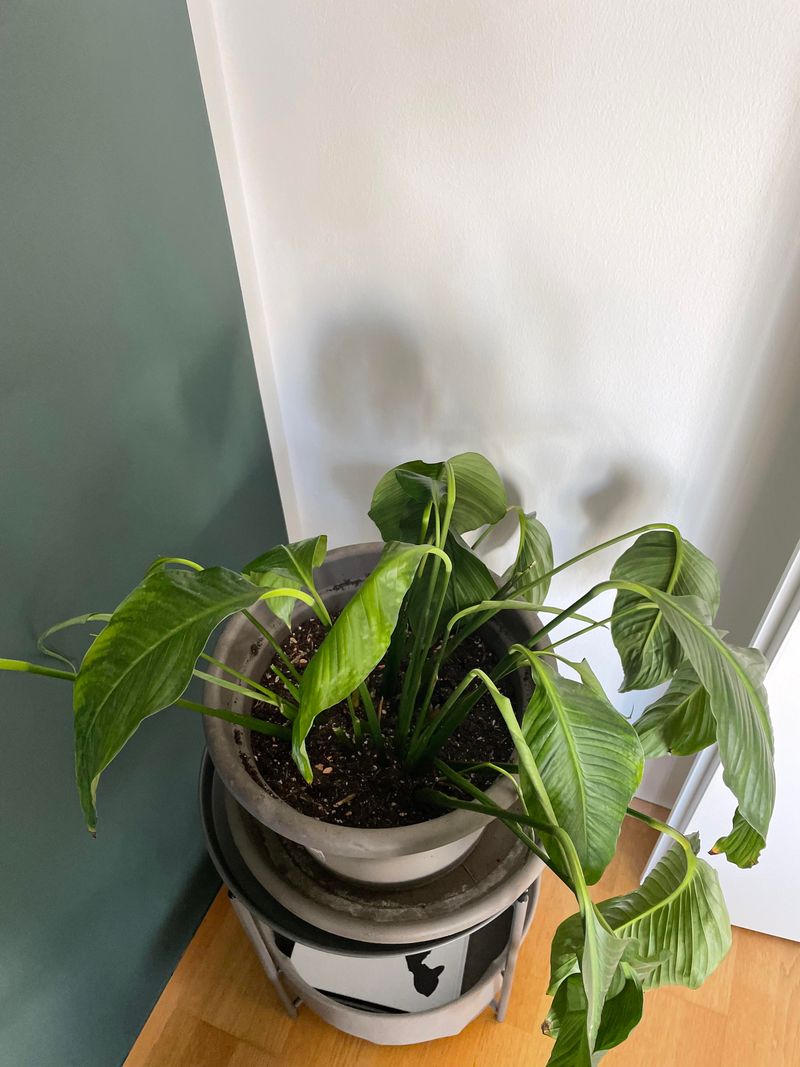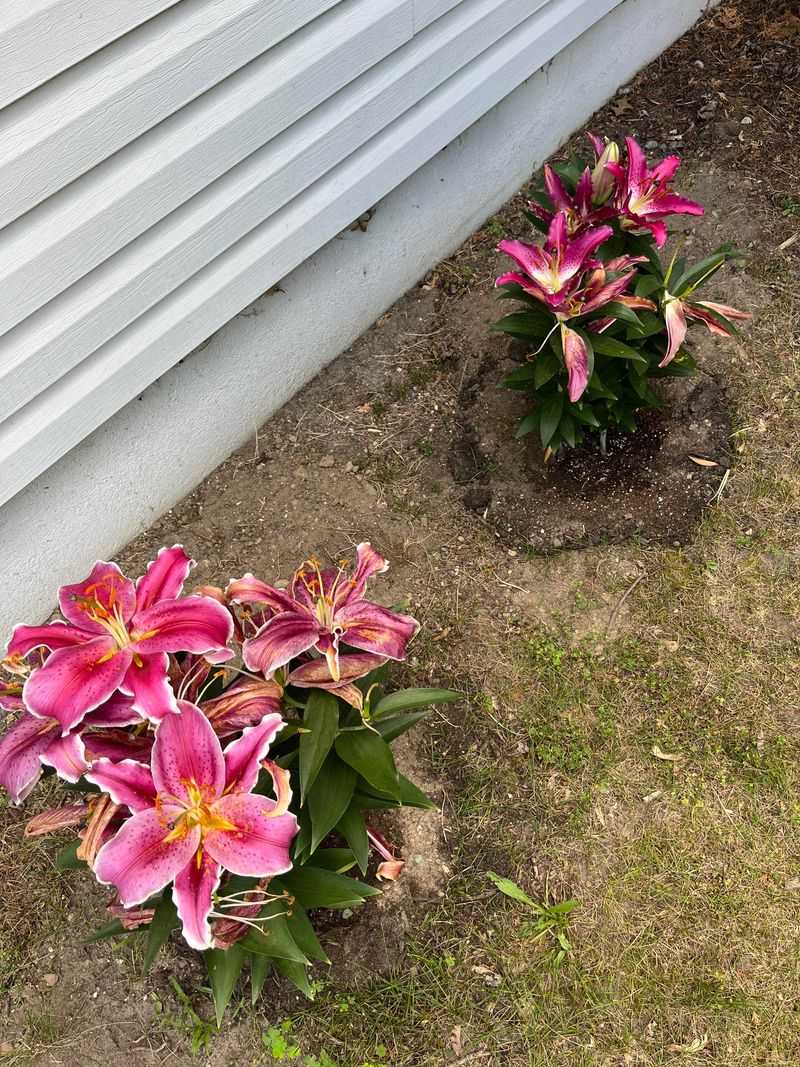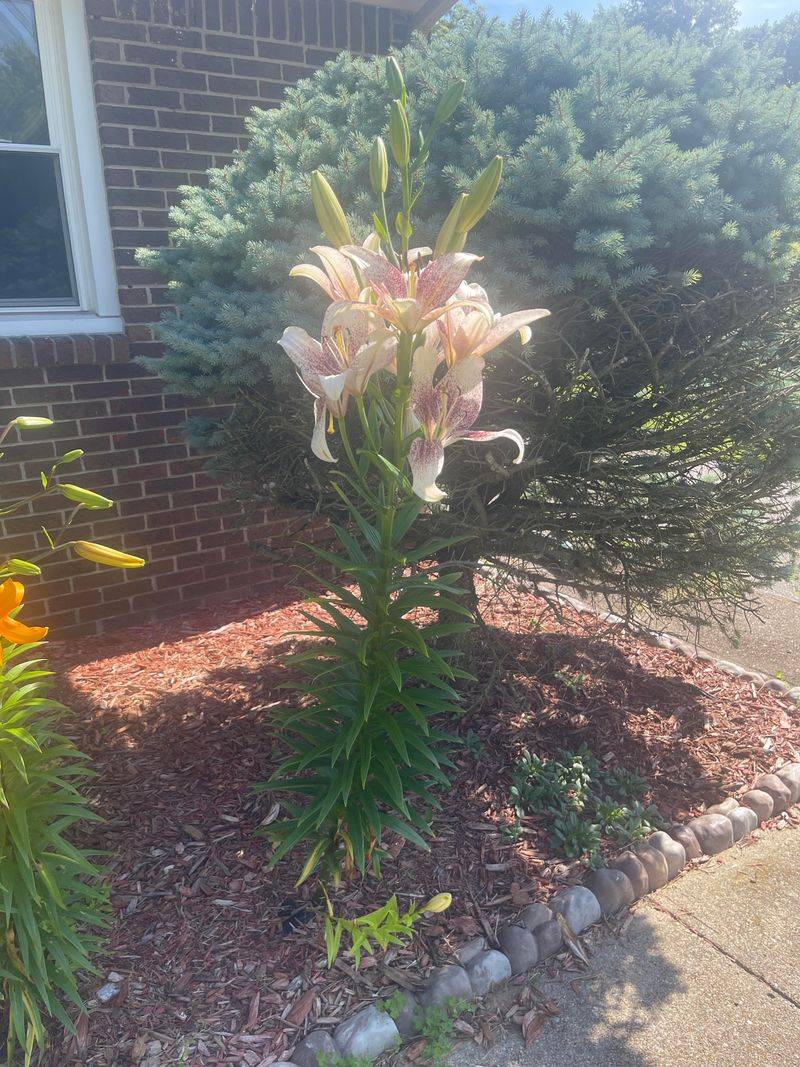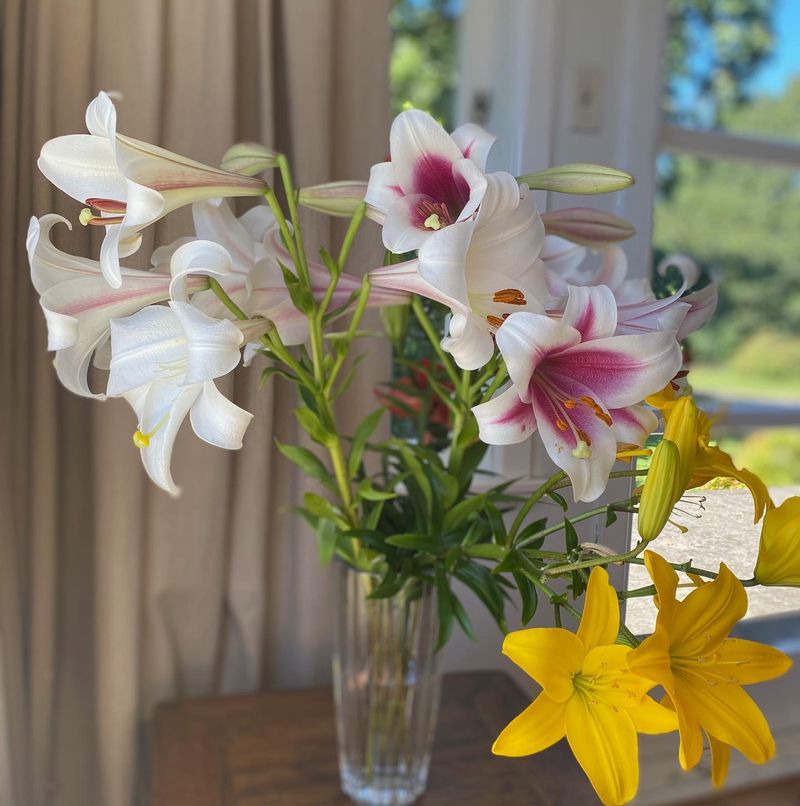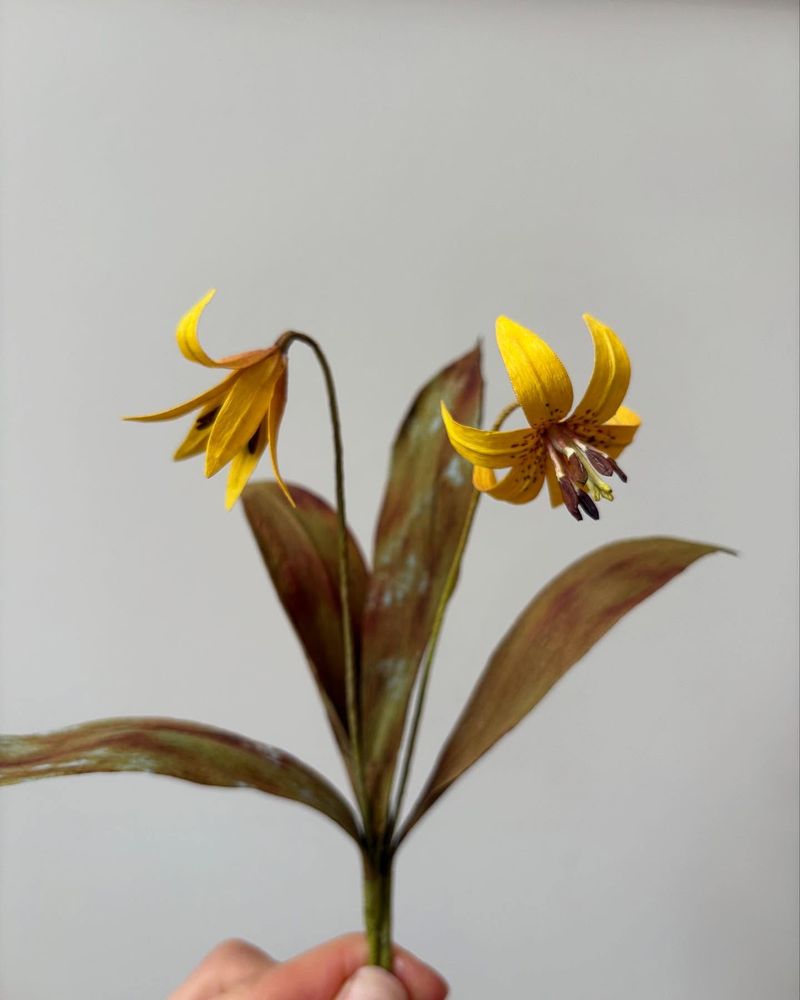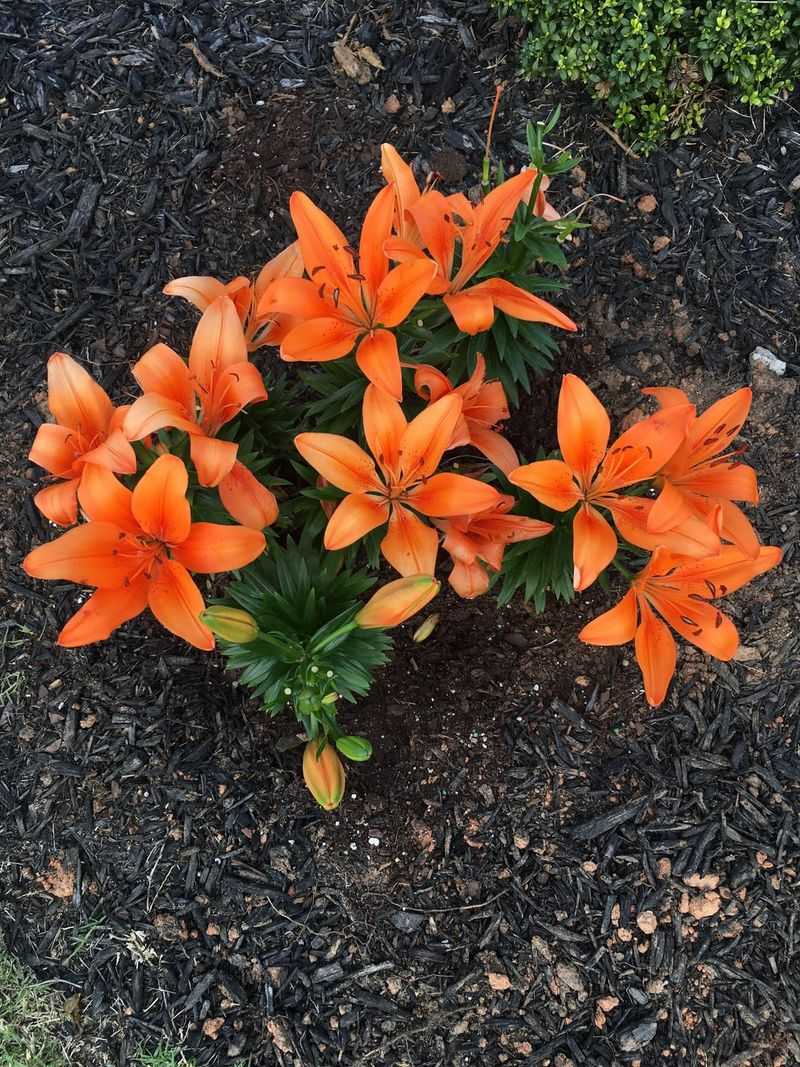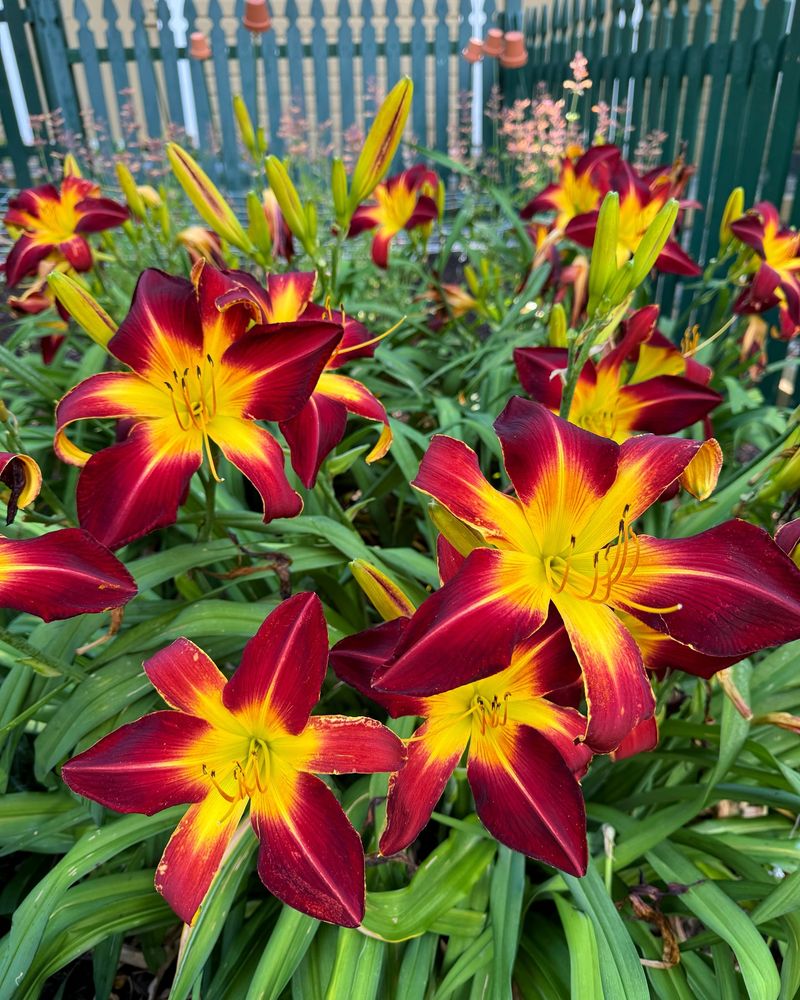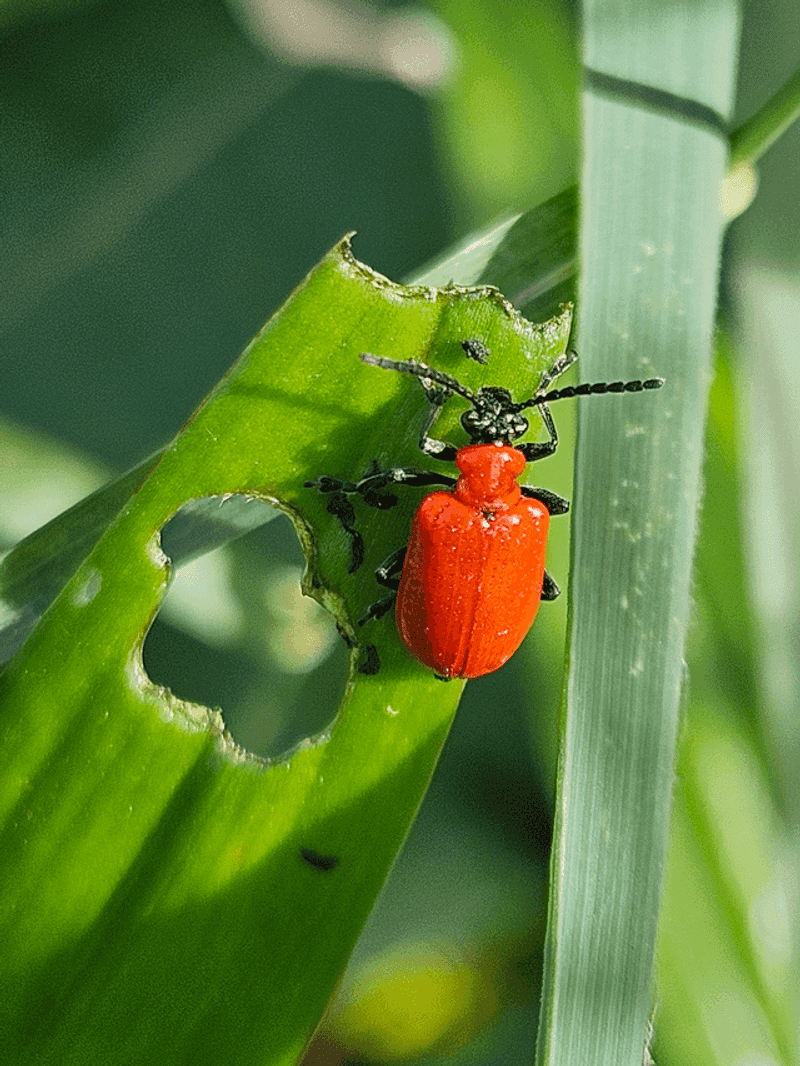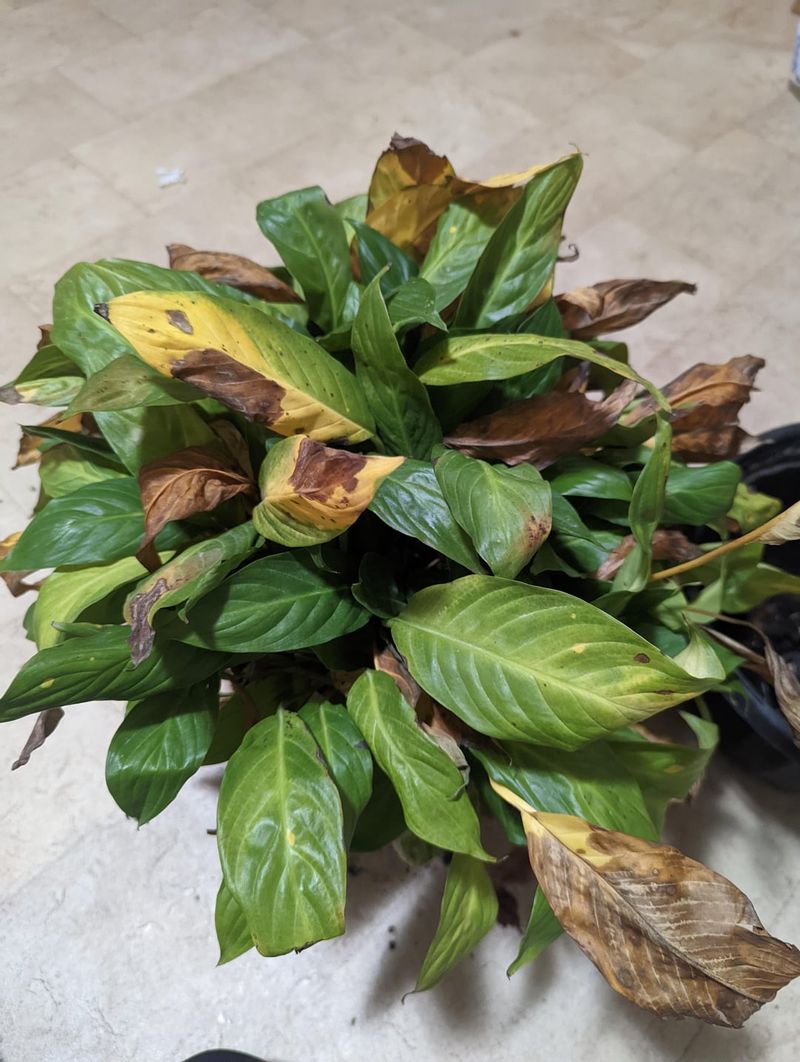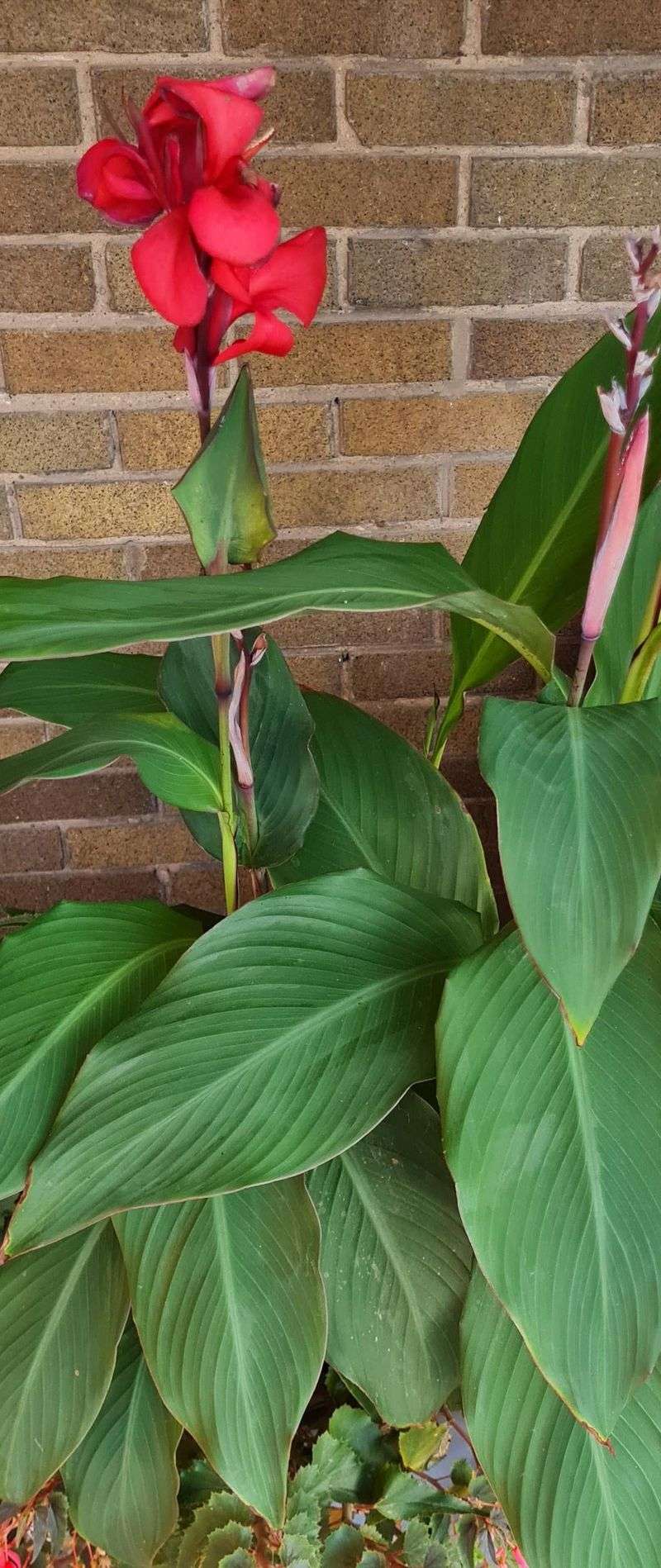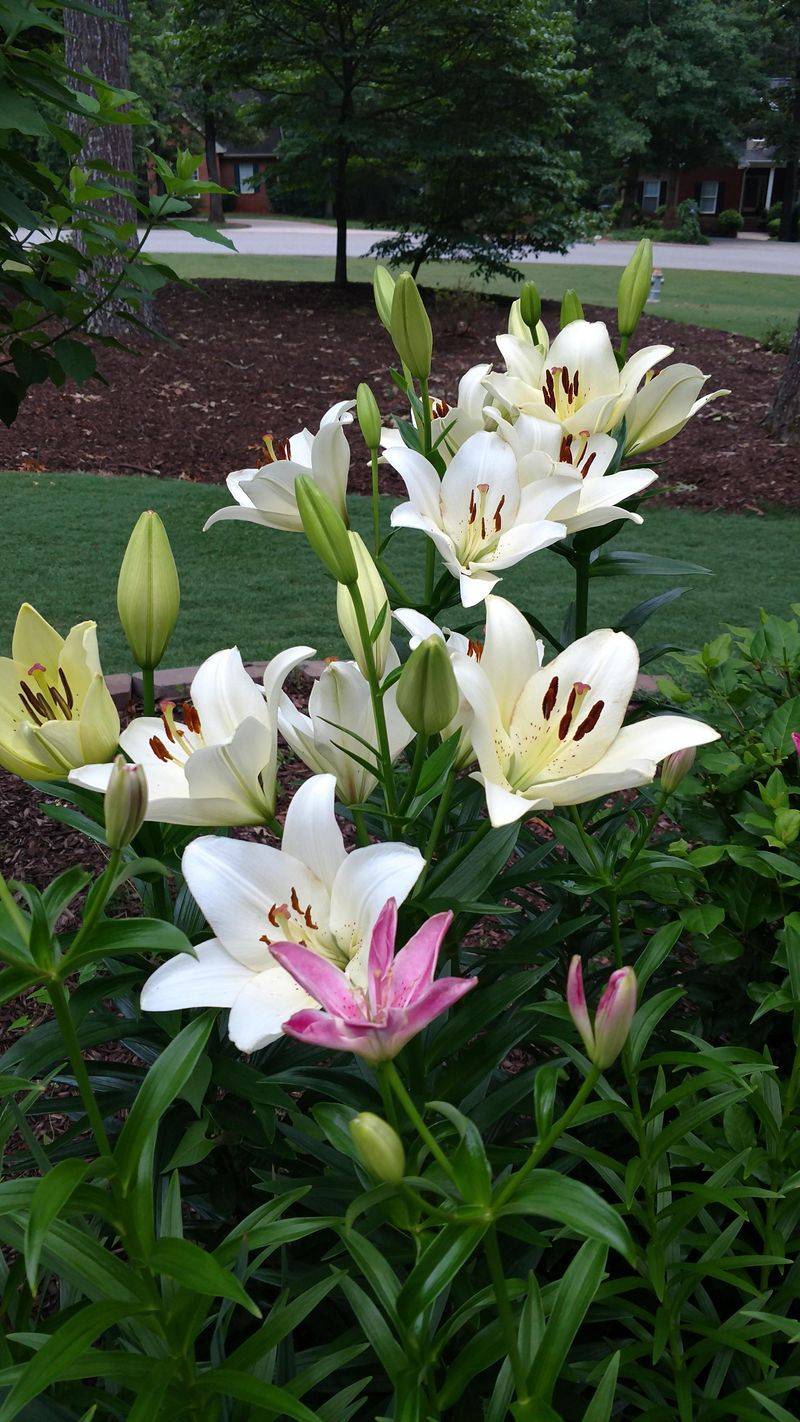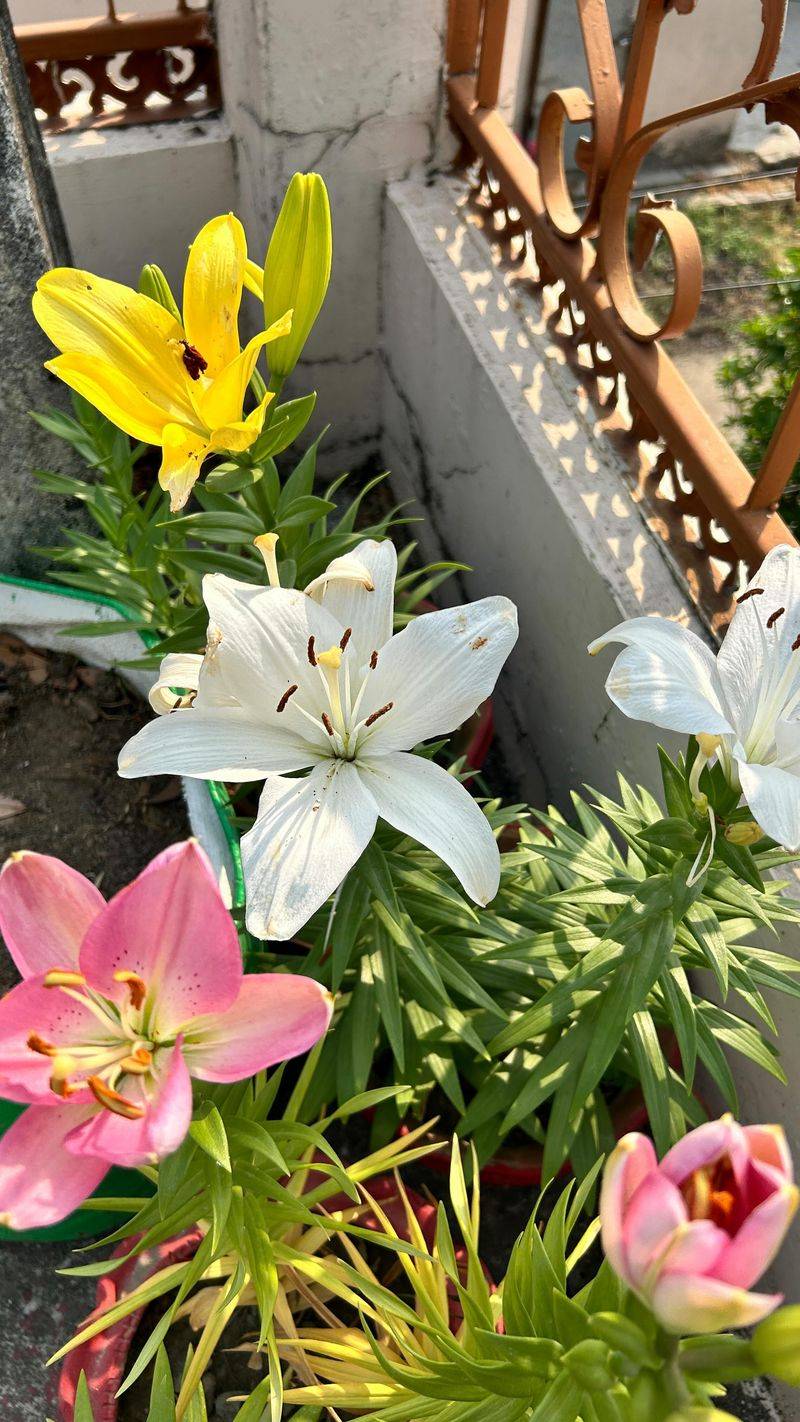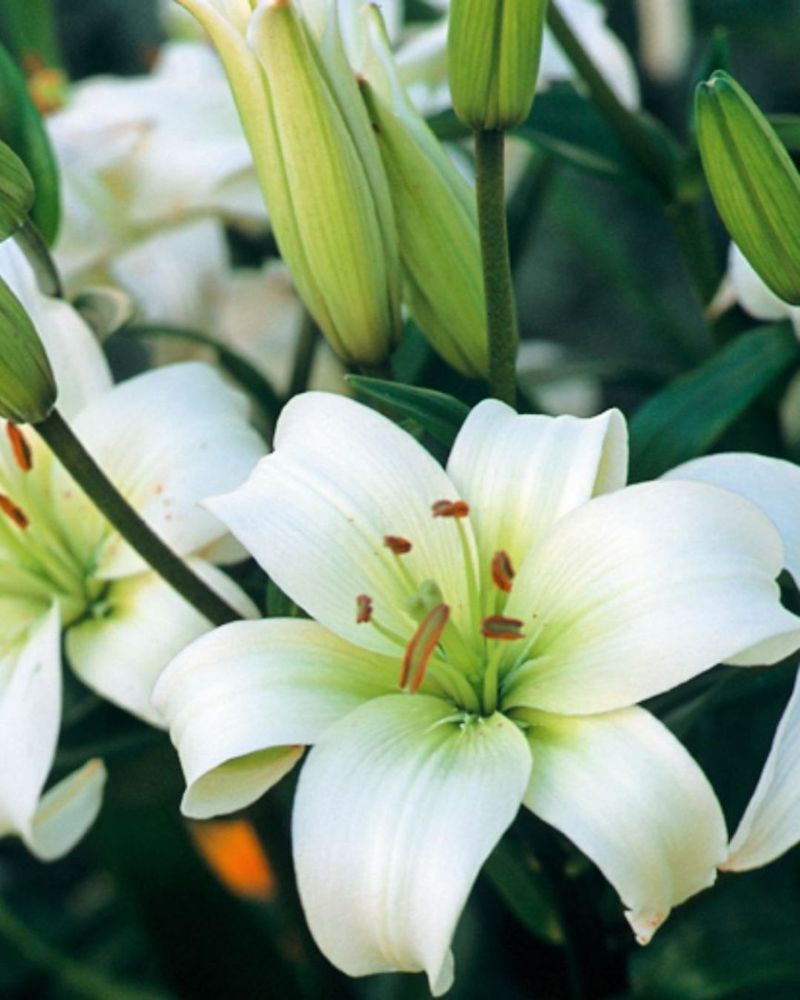Lilies can put on a stunning show, but getting those blooms to last takes a few smart moves. With these 17 tips, you’ll keep them looking fresh and fabulous for as long as possible.
From snipping the right stems to avoiding the mistakes that cut the show short, a little extra care goes a long way. Some of these common habits might be doing more harm than good without you even realizing it.
Let’s get into the tricks that’ll keep your lilies blooming like pros.
1. Choose the Right Planting Location
Morning sunshine works wonders for these stunning flowers! Lilies thrive when they receive 6-8 hours of sunlight daily, preferably during the cooler morning hours. The afternoon shade protects their delicate petals from scorching.
Sandy, well-draining soil creates the perfect home for lily bulbs to establish strong root systems. These elegant bloomers absolutely hate having wet feet, which can quickly lead to bulb rot and disappointing flower production.
Consider the mature height when selecting your planting spot. Taller varieties may need protection from strong winds that could snap their stems before you get to enjoy their full blooming potential.
2. Plant Bulbs at the Proper Depth
Digging the perfect home for your flower friends makes all the difference in how long they’ll bloom! The general rule is to plant lily bulbs three times as deep as their height, which typically means 4-6 inches below the soil surface.
Deeper planting encourages these magnificent lilies to develop sturdy stem roots that provide excellent support and nutrient uptake. When planted correctly, they’ll reward you with stronger stems and more abundant, longer-lasting flowers throughout the season.
Leave about 8-12 inches between each bulb to ensure proper air circulation. Good spacing prevents fungal diseases from spreading and gives each plant enough room to access nutrients without competition from its neighbors.
3. Water Consistently But Moderately
Keeping the soil consistently moist but never soggy creates the sweet spot for magnificent blooms! During active growth, these elegant flowers need about an inch of water weekly through rainfall or supplemental watering. A moisture meter can help you avoid the guesswork.
Morning watering sessions give lily roots time to absorb moisture before the heat of the day. Directing water at the soil level rather than spraying the foliage helps prevent fungal issues that can shorten blooming time and overall plant health.
Reduce watering slightly after flowering has finished but don’t let the soil dry out completely. The post-bloom period is when lilies store energy for next year’s display, making appropriate moisture levels crucial for future flowering success.
4. Feed with the Right Fertilizer
Starting with a balanced, slow-release fertilizer right after the first shoots emerge gives your garden stars the nutrients they need! Mix it into the top few inches of soil, being careful not to disturb the developing roots. A 10-10-10 formula provides the perfect balance for healthy growth.
Switching to a phosphorus-rich fertilizer (like 5-10-5) just before the lily buds form encourages more abundant and longer-lasting blooms. The extra phosphorus supports flower development while maintaining the right amount of nitrogen to prevent excessive leaf growth at the expense of flowers.
Avoid high-nitrogen fertilizers that stimulate lush foliage but fewer flowers. Your lilies will reward you with more spectacular and enduring blooms when fed properly throughout their growing cycle.
5. Mulch to Retain Moisture and Control Temperature
Spreading a 2-3 inch layer of organic mulch around your flowering beauties serves multiple purposes! The protective barrier helps maintain consistent soil moisture while insulating the bulbs from temperature extremes. Shredded bark or straw works wonderfully for these elegant garden specimens.
Summer heat can stress lily plants and cause premature bloom fade. Mulch keeps the soil temperature more stable and cool around the roots, extending the flowering period and helping lilies look their best for weeks instead of days.
Keep the mulch a few inches away from the stems to prevent rot issues. This breathing room allows proper air circulation while still providing all the moisture-retention benefits that help sustain those gorgeous blooms through hot summer days.
6. Stake Tall Varieties Early
Getting ahead of gravity saves those magnificent blooms from disaster! Taller lily varieties, especially Oriental types that can reach 4-6 feet, benefit tremendously from early staking before they become top-heavy with gorgeous flowers. Bamboo stakes or decorative metal supports work beautifully.
Installing supports when plants are just 12 inches tall prevents stem damage that could occur if you wait until they’re already leaning. Lilies have relatively brittle stems that can snap under the weight of their spectacular blooms, especially after rain when the flowers become heavier.
Use soft plant ties or natural twine to secure stems loosely to the stakes. This gentle approach allows for some natural movement in the breeze while preventing the catastrophic toppling that can cut short their blooming period.
7. Remove Spent Flowers Promptly
Snipping away faded blooms before they form seed pods redirects the plant’s energy in remarkable ways! This simple maintenance task, called deadheading, prevents lilies from wasting precious resources on seed production. Instead, they’ll channel that energy into producing more flowers or strengthening the bulb.
Using clean, sharp scissors makes the perfect cut just below the spent flower, leaving the stem and leaves intact. The foliage continues photosynthesizing and feeding the bulb for next year’s spectacular display, while the plant might produce additional side blooms during the current season.
Pay special attention to the pollen-covered stamens inside each bloom. Removing them as soon as the flower opens not only extends the life of individual blooms but prevents the messy yellow pollen from staining your clothes or furniture when cut for arrangements.
8. Allow Foliage to Die Back Naturally
Resisting the urge to tidy up immediately after flowering pays huge dividends next season! Those seemingly spent leaves are actually tiny factories, converting sunlight into food that gets stored in the bulb. Lily foliage should remain attached until it turns completely yellow or brown.
Patience during this unglamorous phase directly impacts next year’s blooming potential. The longer those green leaves can photosynthesize, the more energy reserves build up in the bulb, resulting in stronger plants and more abundant flowers when they emerge again.
Consider planting lower-growing companions like coral bells or hostas around your lilies to disguise the aging foliage. This clever garden design strategy maintains your garden’s aesthetic appeal while allowing the lily leaves to complete their essential work uninterrupted.
9. Divide Overcrowded Clumps
Every 3-4 years, giving your flowering beauties more breathing room rejuvenates their blooming power! Overcrowded lily bulbs compete for nutrients and water, resulting in smaller and fewer flowers over time. Early fall after the foliage has died back is the perfect moment for this rejuvenation project.
Carefully lifting the entire clump with a garden fork prevents damage to the bulbs and their delicate scales. Gently separate the bulbs, keeping as many roots intact as possible, and replant immediately at the proper spacing and depth to minimize transplant shock.
This division process creates an opportunity to improve the soil with compost or aged manure. Your newly spaced lilies will reward you with renewed vigor and dramatically improved flowering in the following seasons, extending their peak performance years.
10. Protect from Extreme Heat
Creating afternoon shade during scorching summer days extends flowering time dramatically! When temperatures soar above 85°F, lily blooms can quickly fade and wilt. A simple shade cloth suspended above prized specimens can add days or even weeks to their display period.
Mulching heavily around the base helps keep root zones significantly cooler than the air temperature. These magnificent flowers appreciate consistent soil temperatures, which promotes longer-lasting blooms and prevents stress that can cut their show short.
Consider using larger companion plants on the western side of your lily bed as natural sun shields. Tall perennials or decorative trellises with climbing plants can provide that crucial afternoon protection while maintaining an attractive garden design that showcases your lilies during their peak blooming period.
11. Control Lily Beetles Promptly
Keeping a vigilant eye out for those bright red invaders can save your gorgeous blooms! Scarlet lily beetles and their larvae can devastate plants in days, chewing through leaves, stems, and even flower buds before they open. These distinctive pests are easy to spot but require immediate action.
Morning inspections yield the best results since these destructive beetles are most active early in the day. Handpicking and dropping them into soapy water provides effective control without resorting to harsh chemicals that might harm beneficial insects visiting your lily flowers.
Applying neem oil as a preventative measure creates a natural barrier against these persistent pests. Regular applications every 7-10 days during spring and early summer can significantly reduce infestations and protect your lilies’ ability to produce their magnificent, long-lasting blooms.
12. Prevent and Treat Fungal Diseases
Giving each plant enough space for proper air circulation creates a hostile environment for fungal spores! Lilies planted too closely together create humid pockets where botrytis and other fungal diseases thrive, quickly diminishing flowering potential and plant vigor.
Morning watering allows foliage to dry completely before evening, significantly reducing disease pressure. These magnificent blooms are particularly susceptible to fungal issues when their leaves remain wet overnight, making your watering schedule almost as important as the amount of water provided.
Applying a preventative fungicide early in the season protects your investment in these spectacular flowers. Copper-based products or neem oil applied according to package directions can keep fungal problems at bay, ensuring your lilies reach their full blooming potential without interruption from disease.
13. Avoid Cutting Too Many Stems for Bouquets
Limiting your cutting enthusiasm preserves the plant’s future blooming potential! While it’s tempting to bring armfuls of these fragrant beauties indoors, removing more than one-third of the stems severely impacts the bulb’s ability to store energy for next year’s flowers.
When cutting lilies for arrangements, leave at least two-thirds of the stem attached to the plant with its leaves intact. Those remaining leaves are crucial photosynthesis factories that continue feeding the bulb long after the blooms have faded, ensuring spectacular flowers return next season.
Consider growing a dedicated cutting garden for these magnificent flowers if you frequently enjoy them in indoor arrangements. This separate planting allows you to harvest freely without diminishing the display in your main garden beds, giving you the best of both worlds.
14. Provide Winter Protection in Cold Climates
Adding a thick blanket of mulch after the ground freezes creates a stable environment for dormant bulbs! Most lily varieties are surprisingly cold-hardy, but fluctuating temperatures and freeze-thaw cycles can damage bulbs and reduce their flowering potential in subsequent seasons.
Waiting until after the first hard freeze to apply winter mulch prevents rodents from making cozy homes too early. These magnificent plants benefit from 4-6 inches of loose material like straw, pine needles, or shredded leaves that insulates without compacting or retaining too much moisture.
Remember to remove this protective layer gradually in spring as new growth emerges. Pulling away winter mulch in stages allows tender shoots to acclimate to changing conditions while still protecting them from late frosts that could damage early growth and diminish flowering.
15. Don’t Disturb Newly Planted Bulbs
Giving your new garden additions time to establish creates a foundation for spectacular blooms! First-year lilies need an undisturbed growing season to develop strong root systems before reaching their full flowering potential. Resist the urge to dig or cultivate deeply around these recent plantings.
Marking the location of newly planted bulbs with permanent garden stakes prevents accidental damage. These magnificent flowers can be late to emerge in spring, and it’s surprisingly easy to forget exactly where you planted them when the garden bed looks empty in early spring.
Consider applying a light layer of balanced fertilizer on the soil surface rather than working it in during that crucial first year. This gentle approach provides nutrients without disturbing developing roots, setting the stage for years of abundant, long-lasting blooms as your lilies mature and multiply.
16. Never Let Soil Completely Dry Out
Maintaining consistent moisture throughout the growing season prevents stress that can cut blooming short! Even during dormancy, these magnificent plants benefit from slightly damp (never soggy) soil conditions. Completely dry soil can cause bulbs to shrivel and significantly reduce their flowering capacity.
Installing a simple drip irrigation system takes the guesswork out of watering needs. Lilies thrive with deep, infrequent watering that reaches their root zone rather than frequent shallow sprinkles that barely penetrate the soil surface and can encourage shallow rooting.
Pay extra attention during bud formation and flowering stages when water needs peak. A moisture meter pushed deep into the soil near your lilies provides accurate readings beyond what the surface might indicate, helping you provide exactly what these spectacular bloomers need to perform their best.
17. Don’t Ignore End-of-Season Care
Taking a few extra minutes in fall sets the stage for next year’s magnificent display! Cutting stems down to about 2-3 inches above soil level after foliage has completely yellowed removes potential overwintering sites for pests and diseases. This simple cleanup significantly improves next season’s flowering performance.
Applying a balanced, slow-release fertilizer in late fall gives lily bulbs a nutritional boost right when they’re developing next year’s flower buds underground. These incredible plants actually form their flower embryos during dormancy, making this often-overlooked feeding particularly important for spectacular blooms.
Consider refreshing mulch layers before winter sets in to maintain consistent soil temperatures. This protective blanket prevents premature sprouting during winter warm spells that could deplete the bulb’s energy reserves before the true growing season begins.

